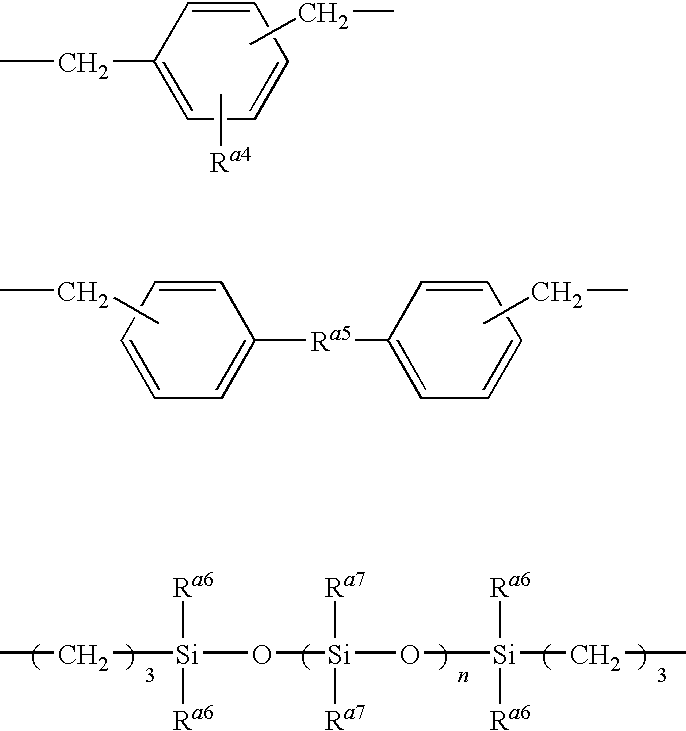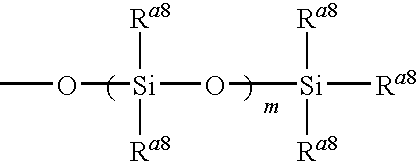Nonaqueous ink, ink set, image-forming method, image-forming apparatus and recorded article
a technology of ink set and ink set, which is applied in the field of nonaqueous ink, can solve the problems of deterioration of light resistance, unsatisfactory conventional inks, and difficult to obtain inks favorable in both light resistance and transparency
- Summary
- Abstract
- Description
- Claims
- Application Information
AI Technical Summary
Benefits of technology
Problems solved by technology
Method used
Image
Examples
example 1
[0215]The Magenta Millbase A obtained above and the components for the following ink composition were mixed in a high-speed ice-cooled stirrer. The resultant mixture was filtered through a 5-μm membrane filter, to give a Magenta Ink A.
(Composition of Ink)
[0216]
CompositionAddition amount (mass part)Magenta Millbase A12.0OXT-22111.0UVR610511.9OXT-21152.0CPI-100P12.09,10-dibutoxyanthracene1.0BYK3070.1
[0217]5
examples 2 to 6
[0218]Magenta Inks B to F were obtained in the same manner as in Example 1, except that the Magenta Millbase A was replaced with any of the Magenta Millbases B to F, respectively.
example 7
[0220]The Cyan Millbase A obtained above and the components for the following ink composition were mixed in a high-speed ice-cooled stirrer. The resultant mixture was filtered through a 5-μm membrane filter, to give a Cyan Ink A.
(Ink Composition of Cyan Color)
(Composition of Ink)
[0221]
CompositionAddition amount (mass part)Cyan Millbase A6.0OXT-22111.0UVR61059.9OXT-21160.0CPI-100P12.09,10-dibutoxyanthracene1.0BYK3070.1
PUM
| Property | Measurement | Unit |
|---|---|---|
| particle diameter | aaaaa | aaaaa |
| particle diameter | aaaaa | aaaaa |
| particle diameter | aaaaa | aaaaa |
Abstract
Description
Claims
Application Information
 Login to View More
Login to View More - R&D
- Intellectual Property
- Life Sciences
- Materials
- Tech Scout
- Unparalleled Data Quality
- Higher Quality Content
- 60% Fewer Hallucinations
Browse by: Latest US Patents, China's latest patents, Technical Efficacy Thesaurus, Application Domain, Technology Topic, Popular Technical Reports.
© 2025 PatSnap. All rights reserved.Legal|Privacy policy|Modern Slavery Act Transparency Statement|Sitemap|About US| Contact US: help@patsnap.com



